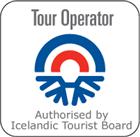
| Convert ISK |
|
|
|
|
|
|
|
|
| Reference only |

Hrisey
Hrísey, by the coast of Eyjafjörður, is Iceland's second largest island. It is 7.5 km long, and at its widest measures 2.5 km across; it is, however, much narrower on its north side, which, at about 110m above sea-level, is the highest area of the island. Hrísey has been inhabited since Iceland's period of settlement. Helgi the Lean, who settled Eyjafjörður, put a man on the island when he stayed in Hámundarstaðir during the winter. This settler, Steinólfur Ölvisson the Small, established, in the year 1200, a farm at Syðstabær in the south of the island, and a farm and church continued to exist there for a long time. Many historically important men have lived there, including Narfi Þrándarson and Hákarl-Jörundur Jónsson, of whom a statue was erected at the bottom of Syðstabær Hill, in 1955.Hrísey is an independent, active community, and has been since 1931. Around 250 people live on the island. The population was at its height during the 'herring-years' of the 1940s, when Hrísey was one of the biggest herring-villages in the North of Iceland; the inhabitants then numbered around 340. Hrísey can be clearly seen from the coast at Árskógssandur. The ferry Sævar makes 8 to 9 daily trips between the mainland and Hrísey, and the sailing takes 15 minutes. Upon arrival in Hrísey, the visitor is greeted by a very neat village with paved roads and pretty gardens and an abundance of bird-life.
The foundations of Hrísey consist mainly of basalt, and are 10 to 11 million years old. A large number of dykes have formed in the rock, due to volcanic activity and earthquakes. On the west side of the island, about 10m from the sea, a 330m deep borehole contains hot water of around 80°C. Cold water can also be obtained from a borehole. Reforestation has taken place in the north of the island, on the Ystabær land, since 1960. The district of Hrísey itself has engaged in reforestation, on its own land, since 1984.
Neither minks nor foxes have ever lived on Hrísey. All bird-hunting and egg-collecting is forbidden. Ptarmigans are the most common bird on the island, and they are fairly tame, particularly in the autumn when they waddle around the roads and gardens of the town in groups. Much research on the breeding of ptarmigan has for decades been carried out on Hrísey, and in 1994 an extensive survey recorded the number of birds on the island. The conclusions of the survey were that around 40 types of bird breed on the island, and moreover that Hrísey is one of the main breeding grounds for arctic terns in Europe.
The year 1974 saw the opening of a quarantine centre for Galloway cows on the island. All other farm animals were then removed, and since then the island's vegetation has greatly improved.
The biggest source of employment on Hrísey is the fishing industry and fish processing. Snæfell, the island's powerful freezing plant, processes all the catch which comes to the island.
Hrísey offers sleeping-bag accommodation during the summer, in the island's elementary school. It also has a good camping-site with sanitary facilities. There are two restaurants, Brekka and Snekkjan, which serve varied menus in relaxed surroundings. Brekka also offers accommodation in double-rooms. Hrísey's swimming-pool is open c. eight months of the year.
Hrísey's major project is its ongoing work in the area of tourism, for which there is a three-year-plan. The construction of the harbour, matters of education and of employment, and the plan to make Hrísey the first environmentally-aware island in the world, are all important issues.
www.eyjafjordur.is
